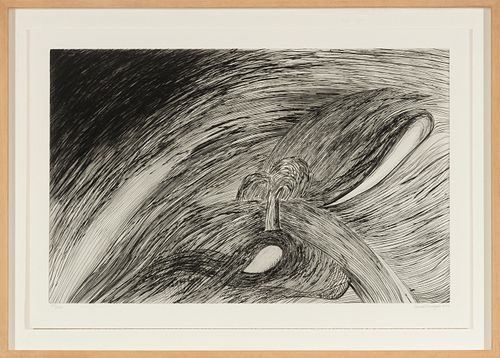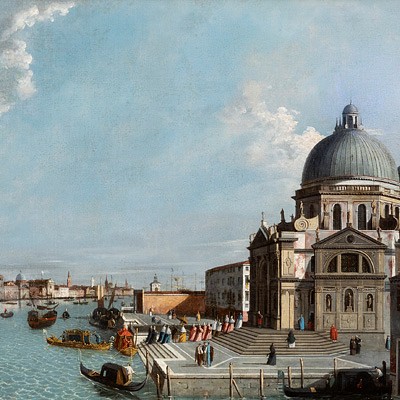LOUISE JOSEPHINE BOURGEOIS (Paris, 1911 – New York, 2010). "Storm at Saint Honoré", 1994. Etching on bearded paper. Example 79/100. Editor: Odition
Lot 10
About Seller
Setdart Auction House
Carrer Aragó 346
Barcelona
Spain
Setdart Subastas was born in 2004 and is currently the first online art auction in Spain with solidity, prestige and reliability guaranteed by our more than 60,000 users. Setdart has a young, dynamic and enterprising team ready to successfully manage the purchase and sale of art works through custom...Read more
Categories
Estimate:
EUR€3,500 - EUR€4,000
$3,763.44 - $4,301.08
Absentee vs Live bid
Two ways to bid:
- Leave a max absentee bid and the platform will bid on your behalf up to your maximum bid during the live auction.
- Bid live during the auction and your bids will be submitted real-time to the auctioneer.
Bid Increments
| Price | Bid Increment |
|---|---|
| EUR€0 | EUR€10 |
| EUR€200 | EUR€25 |
| EUR€500 | EUR€50 |
| EUR€1,000 | EUR€100 |
| EUR€3,000 | EUR€200 |
| EUR€5,000 | EUR€500 |
| EUR€10,000 | EUR€1,000 |
| EUR€20,000 | EUR€2,000 |
| EUR€50,000 | EUR€5,000 |
About Auction
By Setdart Auction House
May 18, 2021
Set Reminder
2021-05-18 09:30:00
2021-05-18 09:30:00
America/New_York
Bidsquare
Bidsquare : Classics XIX and XX
https://www.bidsquare.com/auctions/setdart-auction-house/classics-xix-and-xx-6961
The next 18th May there will be a 19th and 20th Century Classics Auction at Setdart.com There will be a select repertoire of important artists such as Carlos Cruz Diez, Luis Feito, Joan Miró, Fernando Botero, Josep Llimona, Salvador Dalí among others. Setdart Auction House sofia@setdart.com
The next 18th May there will be a 19th and 20th Century Classics Auction at Setdart.com There will be a select repertoire of important artists such as Carlos Cruz Diez, Luis Feito, Joan Miró, Fernando Botero, Josep Llimona, Salvador Dalí among others. Setdart Auction House sofia@setdart.com
- Lot Description
LOUISE JOSEPHINE BOURGEOIS (Paris, 1911 – New York, 2010). "Storm at Saint Honoré", 1994. Etching on bearded paper. Example 79/100. Editor: Oditions de la Tempete, Paris, 1994. Stamp: Harlan & Weaver, New York. The 45/100 copy of this print run belongs to the collection of the Reina Sofía Museum and Art Center. Registration Number. AD00431. Signed, dated and numbered in pencil. Measures: 53.2 x 91 cm (footprint); 62.5 x 91 cm (paper); 75 x 103.5 cm (frame). In this work the artist shows her completely personal view of the commune of Saint Honoré. For this she uses a language that oscillates between abstraction and figuration, which she shapes through broad and curved strokes. These strokes reflect the aesthetics of her latest works, where a great research for the magnitude of the dimensions can be appreciated. Since her childhood Louise maintained a close relationship with the art world. Her parents owned an antique gallery and a few years after her birth, her family moved from Paris, where they opened a workshop for the restoration of tapestries. In 1930, Bourgeois began his studies at the Sorbonne University in Paris, where he enrolled in mathematics and geometry. However, two years later, due to the death of her mother, Louise, she decided to abandon her mathematics studies in order to begin a new artistic education. It was then that he enrolled at the School of Fine Arts in Paris, and at the Louvre School. Later she continued her education in more independent schools such as the Colarossi academies, the Ranson Academy, etc. Louise also visited the studios of many artists, which allowed her to learn different artistic techniques and the importance of exhibition set-ups. During this period she started a personal business, opened a print shop, where she met Robert Goldwater, whom she married and moved to New York. It was there that she continued her academic training. Her first years in the United States were a hard time for the artist, which she reflected in her work. In 1945 she had her first exhibition, but she did not begin to be part of the city's art scene until the 1950s. In 1954, Bourgeois joined the American Abstract Artists Group, which included artists such as Barnett Newman and Ad Reinhardt. She also became friends with Willem de Kooning, Mark Rothko and Jackson Pollock. These friendships influenced the work of Bourgeois, who made a transition from wood and vertical structures to marble, plaster and bronze. Although she rejected the idea that her art was feminist, her work explores a variety of themes throughout her long career, including the domestic and the family, sexuality and the body, as well as death and the unconscious. Themes that the author connected with memories and experiences of her childhood as a therapeutic process, so it has a strong personal and feminist component. In 1973, Bourgeois began teaching at Pratt Institute, Cooper Union, Brooklyn College and the New York Studio School of Drawing, Painting and Sculpture. From 1974 to 1977, Bourgeois worked at the School of Visual Arts in New York, where she taught printmaking and sculpture. Today her works can be seen in major art centers such as the National Gallery of Art in Washington, D.C.; the Museum of Modern Art in New York; the San Francisco Museum of Modern Art; National Gallery of Canada; Tate in London; Centre Pompidou in Paris. Throughout her career, Bourgeois met many of her major collectors, including Ginny Williams, Agnes Gund, Ydessa Hendeles and Ursula Hauser.
- Shipping Info
-
In-House Shipping
-
- Buyer's Premium



 EUR
EUR CAD
CAD AUD
AUD GBP
GBP MXN
MXN HKD
HKD CNY
CNY MYR
MYR SEK
SEK SGD
SGD CHF
CHF THB
THB














